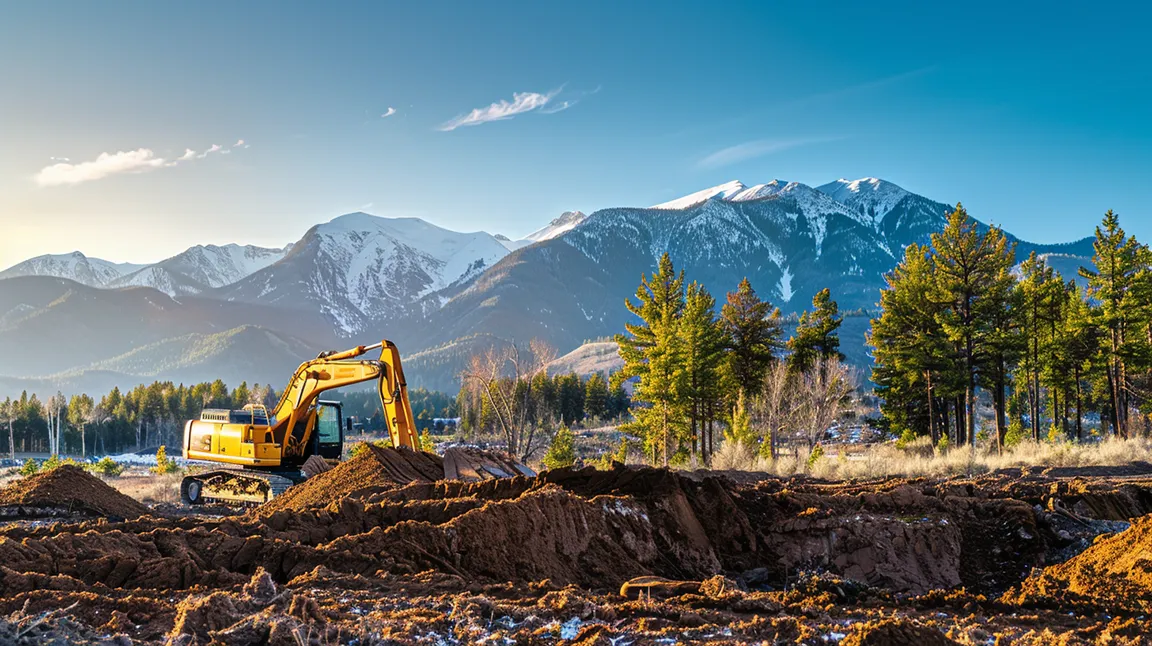Before breaking ground on any construction project, preparing the land is essential to ensure success. Proper site preparation is crucial in northern Montana, where the landscape is defined by rugged terrain, varying soil types, and extreme weather. You risk costly delays, structural issues, and environmental challenges without thorough preparation.
The Importance of Site Preparation in Northern Montana
Northern Montana’s natural beauty comes with unique challenges, from rocky soil and dense vegetation to fluctuating weather conditions. Preparing your land for construction in this environment requires careful planning and execution. Proper preparation ensures that your project meets safety standards, avoids unexpected complications, and is designed to withstand the test of time.
Construction can proceed smoothly when the land is prepared correctly, saving you time, money, and stress. Moreover, well-prepared land provides a stable foundation for your building, reducing the risk of long-term structural issues caused by shifting soil or inadequate drainage.
Step 1: Conduct a Land Survey and Soil Analysis
The first step in preparing your land is to conduct a comprehensive land survey and soil analysis. A land survey identifies property boundaries, slopes, and any natural or man-made features affecting construction. Soil analysis, on the other hand, assesses the soil’s composition, stability, and drainage capacity.
Understanding the characteristics of your land ensures that your construction plans are realistic and compliant with local regulations. In northern Montana, where soil can range from sandy loam to rocky clay, this step helps determine the best excavation, drainage, and foundation placement approach.
Step 2: Clearing the Land
Once the land has been surveyed, the next step is clearing the site of trees, brush, rocks, and debris. Land clearing is crucial for creating a clean, level workspace. Techniques such as forestry mulching or brush hogging can be used to efficiently remove vegetation while preserving the soil’s health.
In northern Montana, dense vegetation and uneven terrain are common obstacles. Clearing the land ensures no hidden hazards, such as unstable trees or buried roots, could interfere with construction. Additionally, the cleared material can often be repurposed for erosion control or landscaping, reducing waste.
Step 3: Excavation and Grading
Excavation involves removing excess soil, rocks, and debris to create a level surface for construction. Grading follows excavation, reshaping the land to ensure proper drainage and stability. These steps are vital for preventing water accumulation around the foundation, which can lead to erosion or structural damage over time.
In Montana’s unpredictable climate, grading is important to direct water away from buildings and protect against flooding during heavy rainfall or snowmelt. Proper excavation and grading also create a firm foundation for roads, driveways, and utility installations.
Step 4: Installing Drainage Systems
Effective drainage is critical to land preparation, especially in northern Montana, where seasonal changes can lead to heavy rainfall and snowmelt. Installing drainage systems prevents water from pooling around the foundation and damaging the structure.
Depending on the site’s needs, drainage systems may include French drains, culverts, or retention basins. By addressing water management early in the process, you can protect your property from long-term issues such as erosion, flooding, and soil instability.
Step 5: Utility Installation
Before construction begins, installing utilities such as water, electricity, and sewer lines is essential. This step often requires coordination with local utility providers and compliance with zoning regulations.
In northern Montana, the harsh winters make it important to ensure that utilities are installed at the correct depths to prevent freezing. Planning for utility installation during the land preparation phase ensures that your project remains on schedule and avoids costly modifications later.
Step 6: Compaction and Foundation Preparation
The final step in land preparation is compacting the soil to create a stable base for the foundation. Soil compaction eliminates air pockets, increases soil density, and enhances its load-bearing capacity. Once the soil is compacted, the foundation can be laid with confidence that it will remain secure over time.
In northern Montana, where frost heave is a concern, proper soil compaction and foundation preparation are critical for preventing cracks and shifting caused by freeze-thaw cycles.
Benefits of Thorough Land Preparation
Properly preparing your land for construction offers numerous benefits beyond your project’s initial phase. By addressing potential issues early, you reduce the risk of costly delays, unexpected repairs, and structural problems in the future.
A well-prepared site ensures the safety and stability of your building, protecting it from environmental factors such as flooding, erosion, and frost heave. This stability enhances your structure’s longevity and increases your property’s overall value.
Additionally, thorough land preparation helps streamline the construction process. With a clean, level, and properly graded site, contractors can work more efficiently, reducing labor costs and project timelines. This efficiency allows you to move forward with your plans more quickly, whether you’re building a home, a business, or a recreational facility.
Finally, proper land preparation demonstrates a commitment to sustainability. Techniques such as forestry mulching and careful grading minimize environmental impact and preserve the natural beauty of northern Montana. By working with experienced professionals who prioritize eco-friendly practices, you contribute to the land’s long-term health and its surrounding ecosystem.
Trust BDH Land Solutions for Your Land Preparation Needs
Preparing land for construction in northern Montana requires expertise, precision, and a deep understanding of the local environment. At BDH Land Solutions, we specialize in providing tailored land clearing, grading, and excavation services to meet the unique needs of our clients. With a commitment to quality and sustainability, we ensure that your land is ready for any project.
Contact us today to learn more about our services and how we can help bring your construction plans to life. Let BDH Land Solutions take the stress out of land preparation so you can focus on what matters most: building your dream.




